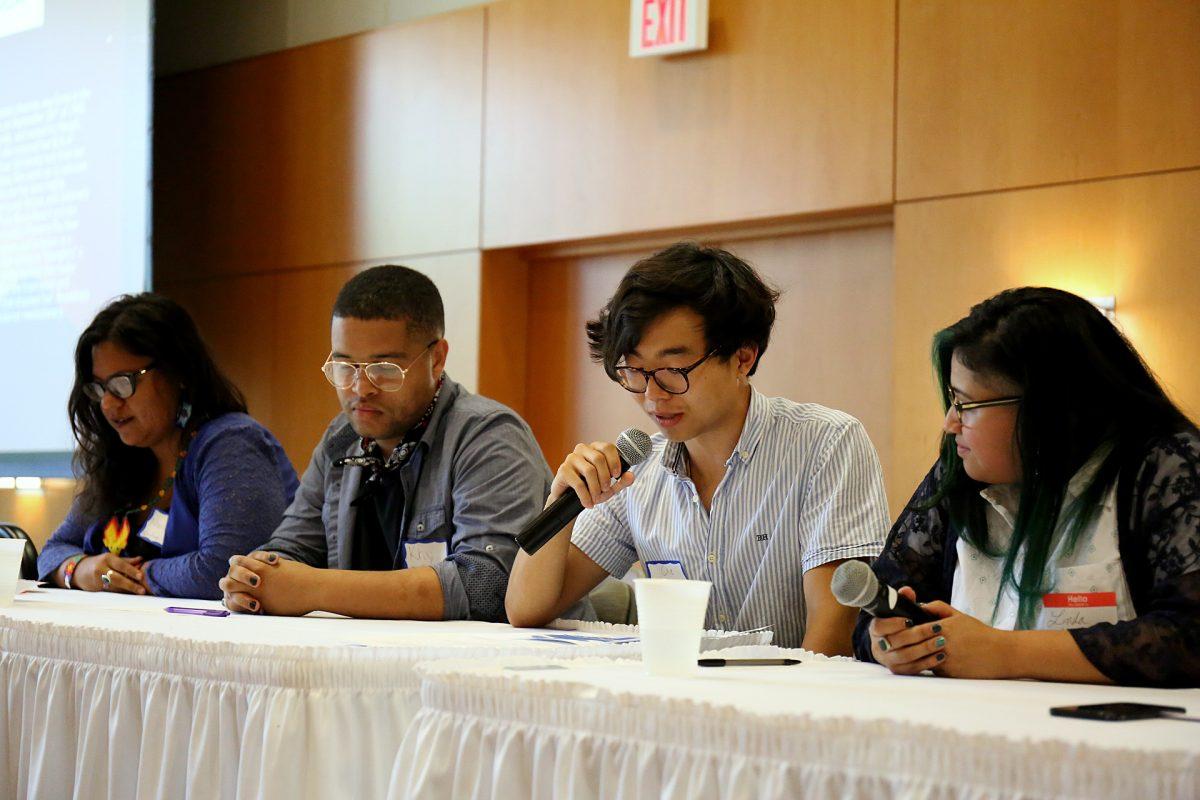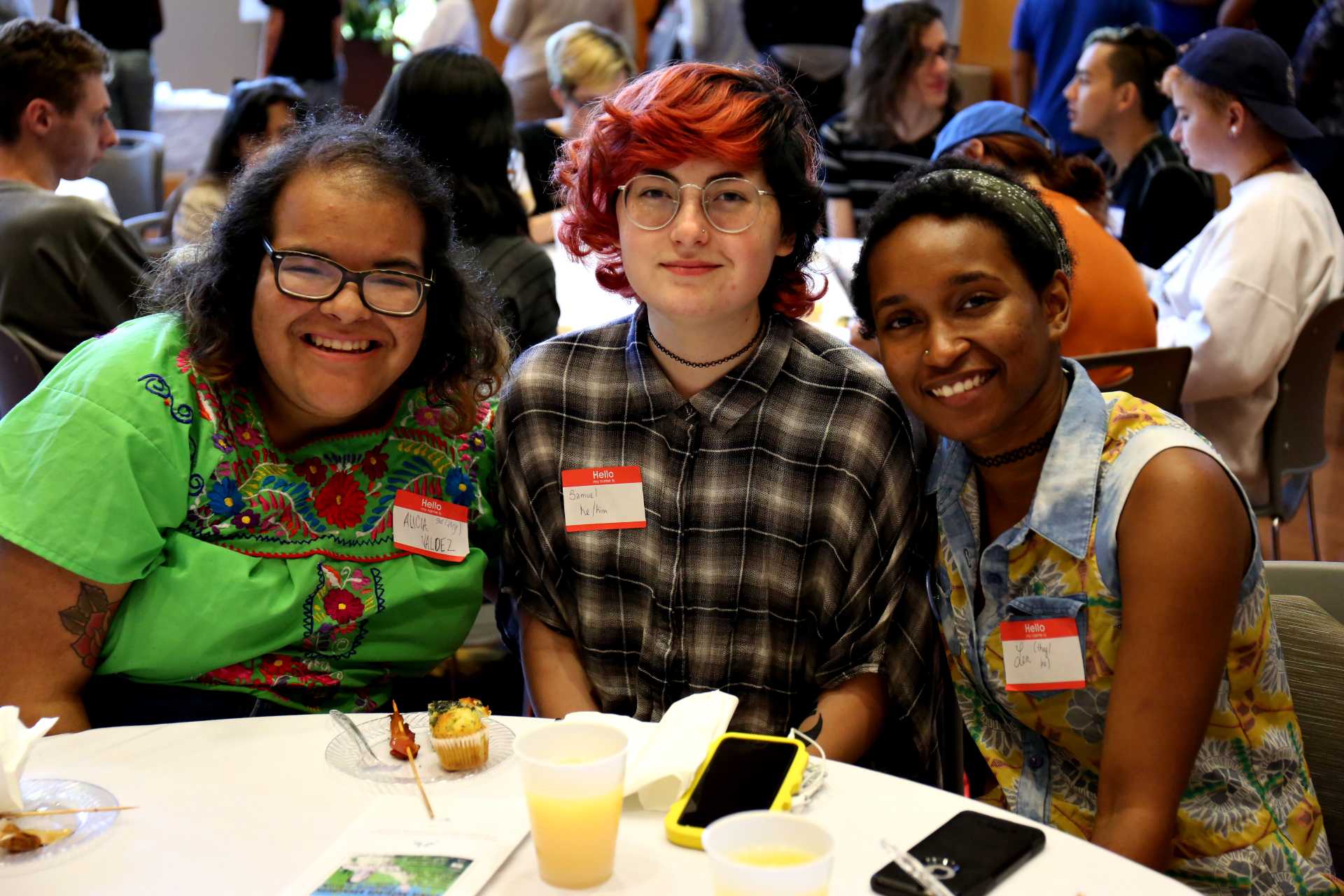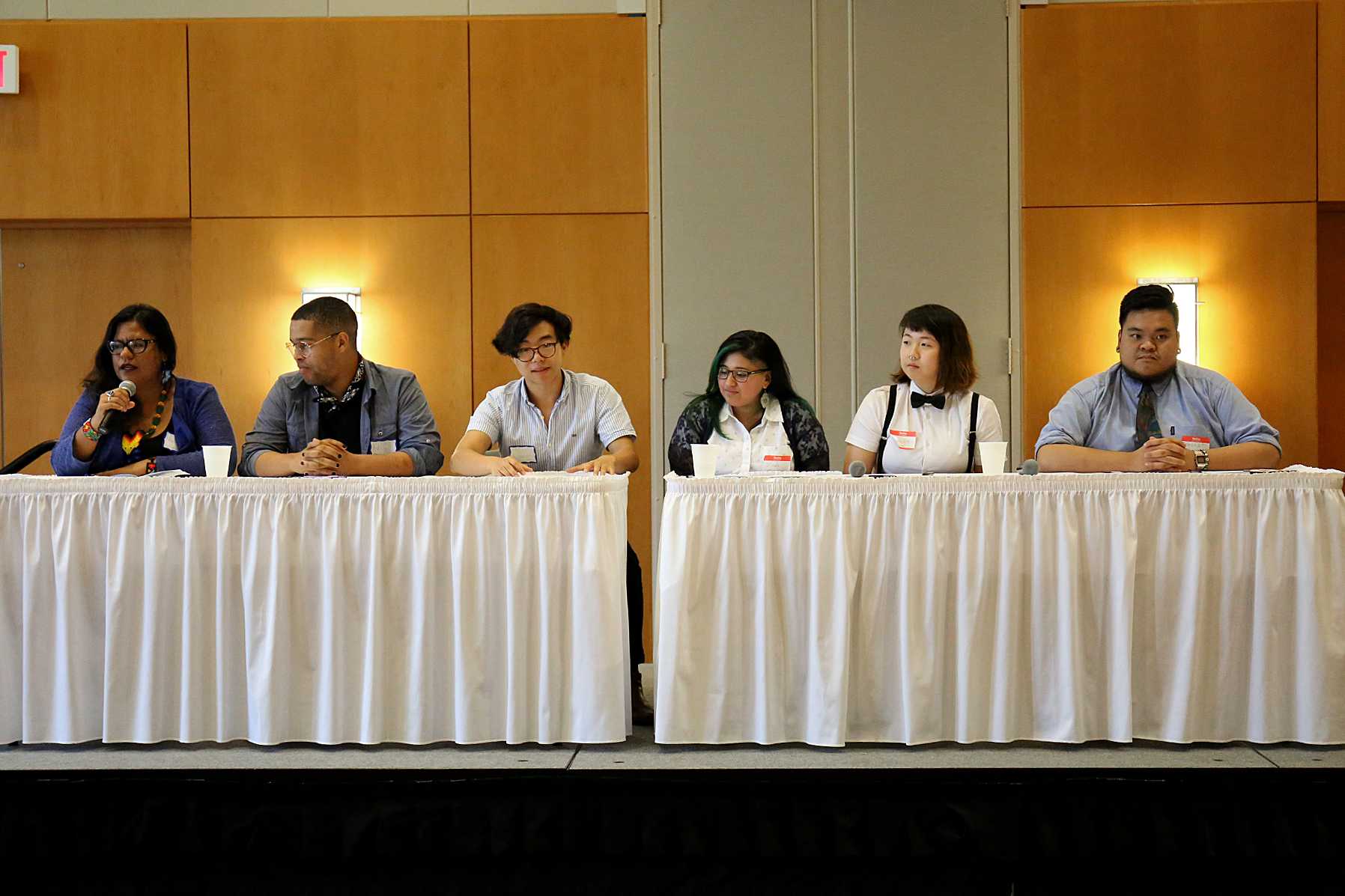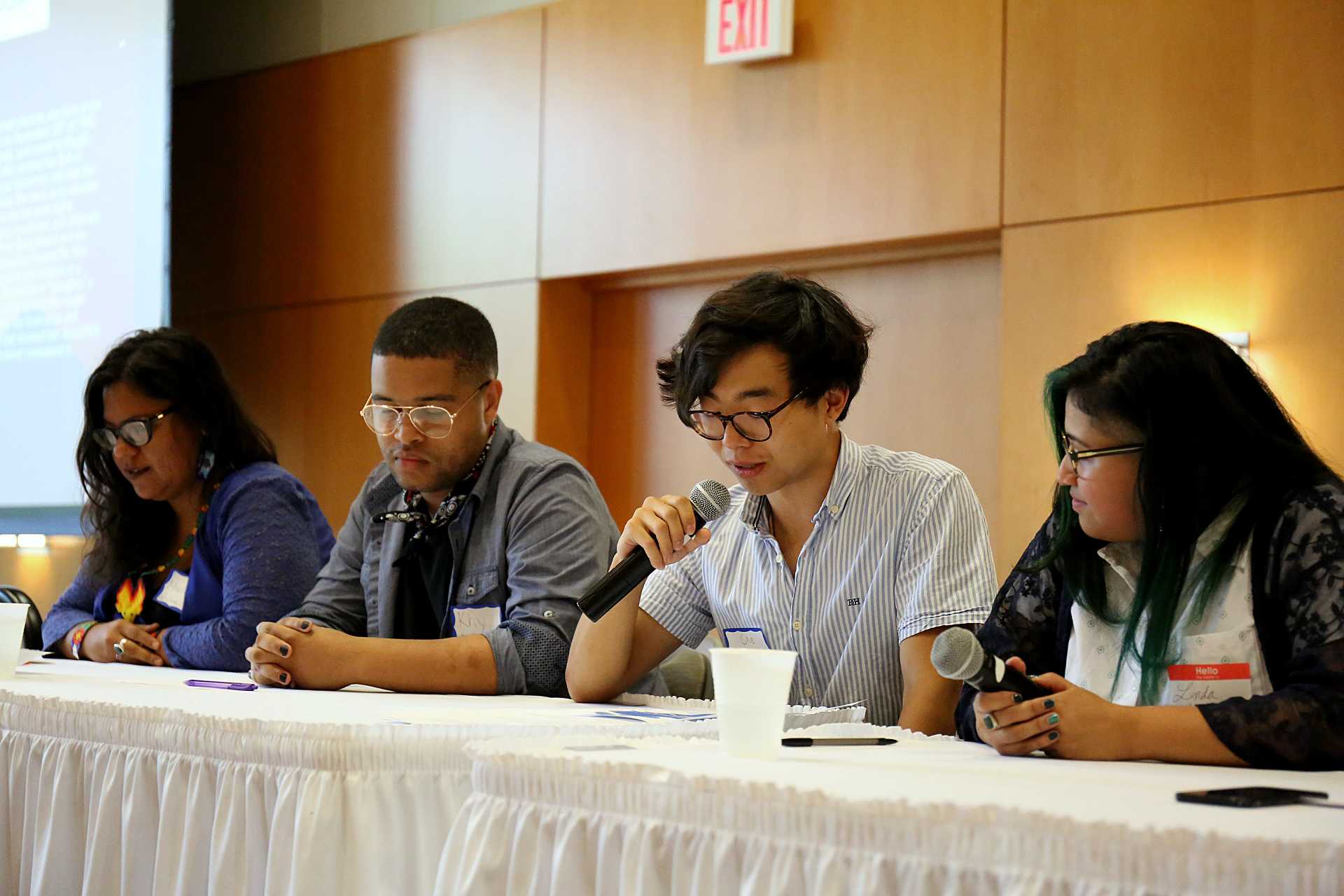Luncheon attendees enjoy the brunch served before the panel of speakers took the stage.
This year’s Gloria Anzaldúa Bruncheon focused on grassroots activism at the University of Texas at Austin and the future of student activism in light of the Trump Administration.
Story by Imani Sebri
Photos by Mary Elizabeth Pistorius
Hosted by the Queer People of Color and Allies (QPOCA) and Students for Equity and Diversity (SED), this 6th annual bruncheon was held to honored the legacy of, queer theorist, feminist, Xicanx activist and UT alumna, Gloria Anzaldúa. The event began with brunch, followed by brief introductions of the four panelists: Khy Davis, Marleen Villanueva, Yerim Choi and Philip Olalo.
The event was facilitated by event organizers James Che and Linda Serna who held a discussion regarding activism on campus, the panelists’ view on social justice in academia and the struggles they have faced throughout their journey as activists.
Panelist Marleen Villanueva discusses marginilization that comes with ceratin intersectionalities.
The first question asked was how each participant got involved with activism, and while each answer was unique, everyone’s responded with genuine feelings of empathy and outrage at the inequalities they navigate everyday. Marleen Villanueva, a first year MA student in cultural studies in education, discussed how her activism has been present her entire life. “I helped organize a walkout in high school, protesting immigration policies in Houston,” Villanueva says. “I remember always going to protests with my primas, you know, it was something we did as a family.”
The next question addressed Sen. Bernie Sanders’ in relation to whether his campaign was an example of grassroots activism. “The reason Bernie Sanders wasn’t effective was because his activism wasn’t grassroots. His activism still operated within the confines of neo-colonialism, white supremacy, and capitalism,” international relations and global studies senior, Yerim Choi says to sounds of affirmation from the audience.
First and foremost, grassroots activism relies on the inclusiveness of all people. In order to be tangibly effective, it must operate outside of systems of oppression and center itself around active campaigning to change injustices.
Moderator James Che poses a new question.
Students may find themselves on the front-lines of these movements and sometimes they suffer the consequences in their academics careers. “I remember I attended a protest that was during my class and unfortunately we had a quiz that day and I got a zero,” international relations and global studies senior Philip Olalo says. “I think one way for faculty to be more inclusive of student-activists is to accommodate us when we need to skip class for demonstrations.”
Student activism is what drives reform in universities. Their constant labor, physical and mental, allows these environments to be a little more breathable, especially for people with marginalized identities. Grassroots activism will be around as long as there are institutions in place that don’t have the best interests of their students at hand.
Gloria Anzaldúa’s legacy will live on through the work of UT student activists. “What I took away is that we still have a lot to do,” government sophomore Luke Hernandez says. “I learned that our bodies are [inherently] political and we can’t stop even if it’s tiring and hard.”














































